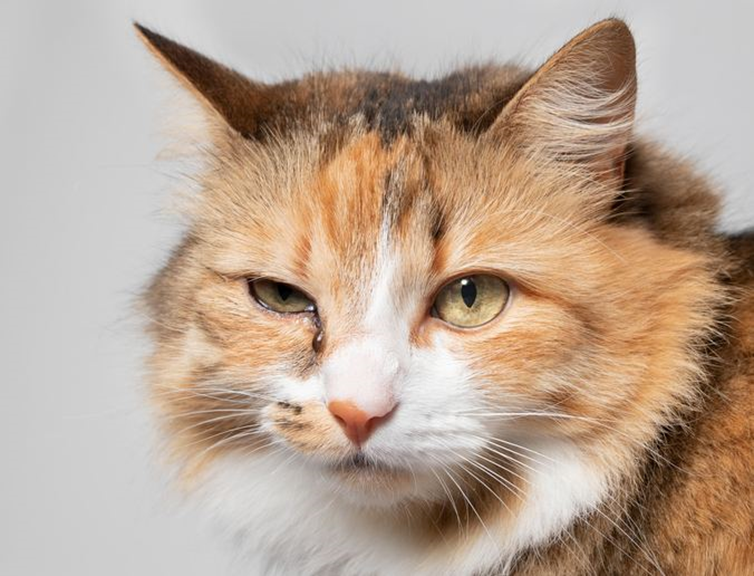Bioguard Corporation
Feline herpesvirus-1 (FHV-1) is a common viral infection in cats that primarily affects the upper respiratory system. It is a major cause of feline viral rhinotracheitis (FVR), which presents symptoms like sneezing, nasal discharge, and conjunctivitis (eye inflammation). FHV-1 is highly contagious among cats and is spread through direct contact with infected saliva, eye or nasal secretions, or contaminated environments. Once infected, many cats can become lifelong carriers of the virus, with symptoms reoccurring during times of stress or illness.
Transmission
A cat can become infected with this virus through direct exposure to viral particles. The virus is transmitted through saliva, as well as eye and nasal discharges from an infected cat. Infection occurs when a susceptible cat comes into contact with an infected cat or with contaminated objects, such as clothing, food and water bowls, or furniture that carry the viral particles.
Though the virus is fragile in the environment and doesn’t survive for long outside the host, it remains a significant concern because many cats become lifelong carriers after infection. Even when no symptoms are present, stress or illness can trigger a flare-up, allowing the carrier to shed the virus and infect others.
Incubation Period of FHV-1 Infection
After a cat is infected with FVR, symptoms typically appear within two to five days, which is the incubation period of the disease. During this time, the cat can already infect other cats. Once symptoms develop, the active infection usually lasts about 10 to 20 days.
Clinical Signs
Upper respiratory signs of FVR include sneezing, nasal discharge, fever, loss of appetite, and coughing. Eye-related symptoms may encompass discharge, conjunctivitis or chemosis, changes in color, and corneal ulcers. In severe cases, the skin around the face may show signs such as redness, swelling, crusting, and hair loss. Other non-specific symptoms can include fever, lethargy (tiredness), anorexia (poor appetite), and enlarged lymph nodes.

Diagnosis
In most cases, a specific diagnosis of FHV infection is not necessary. A presumptive diagnosis of FVR is based primarily on a cat’s medical history and clinical signs combined with the findings on physical examination, particularly if the cat has evidence of a corneal infection. Corneal staining with fluorescein dye is often performed to look for any ulcers that may have developed. However, if a specific diagnosis is needed, ocular or oral swabs can be sent to a veterinary lab. There, the virus can be cultured or, more commonly detected by PCR. Additionally, evidence of the virus can be found in biopsies, which can help diagnose FHV-associated dermatitis.
Prevention
Preventing FVR involves several key strategies:
- Vaccination: Core vaccines for cats include the FVR vaccine, which significantly reduces the severity and duration of the illness, even if it doesn’t completely prevent infection.
- Hygiene and Sanitation: Good hygiene practices, such as washing your hands thoroughly before and after handling other cats, can help prevent the spread of FHV-1. Keeping your cat’s living environment clean is also important.
- Minimizing Stress: Stress can trigger the reactivation of the virus in carrier cats. Providing a stable, stress-free environment can help reduce the likelihood of outbreaks.
- Isolation: If the cat is infected, keeping her isolated from other cats can prevent the spread of the virus. This is especially important in multi-cat households, boarding facilities, and shelters.
References
Bergmann M, Speck S, Rieger A, et al. Antibody response to feline herpesvirus-1 vaccination in healthy adult cats. J Feline Med Surg. 2020 Apr;22(4):329-338.
Cottingham E, Johnstone T, Hartley CA, et al. Update on feline alphaherpesvirus-1 seroprevalence in Victorian feral and owned cats. Aust Vet J. 2022 May;100(5):187-189.
Thomasy SM, Maggs DJ. A review of antiviral drugs and other compounds with activity against feline herpesvirus type 1. Vet Ophthalmol. 2016 Jul;19 Suppl 1(Suppl 1):119-30.

